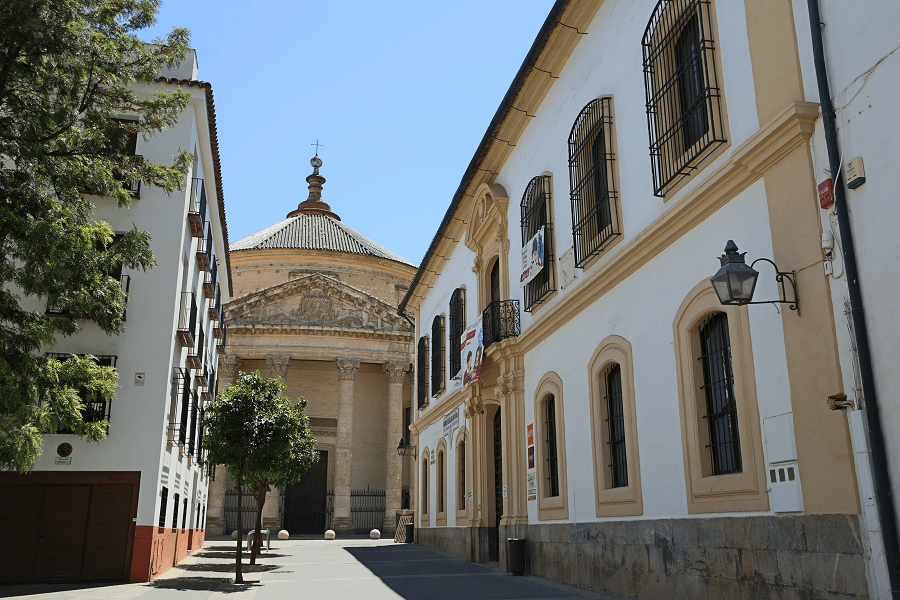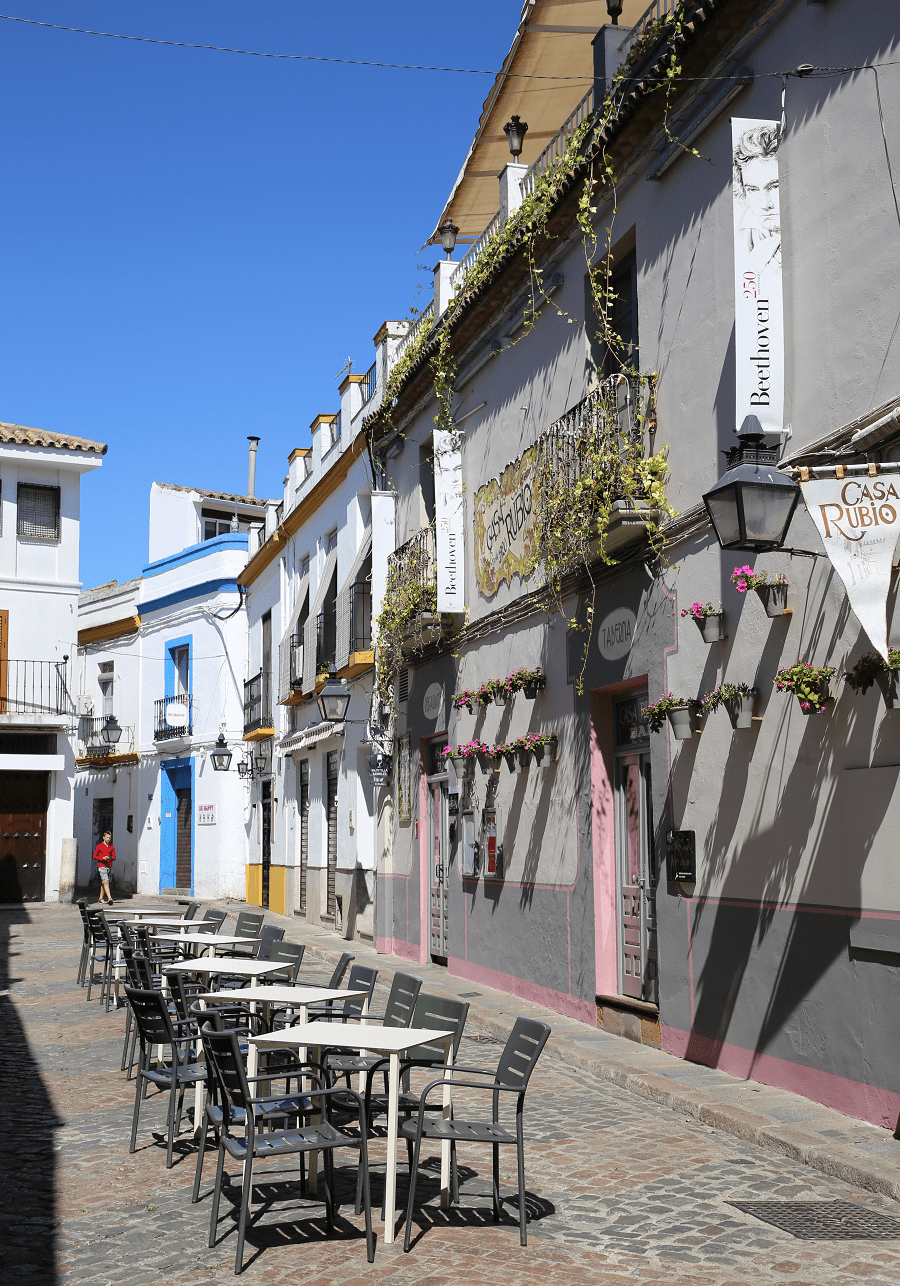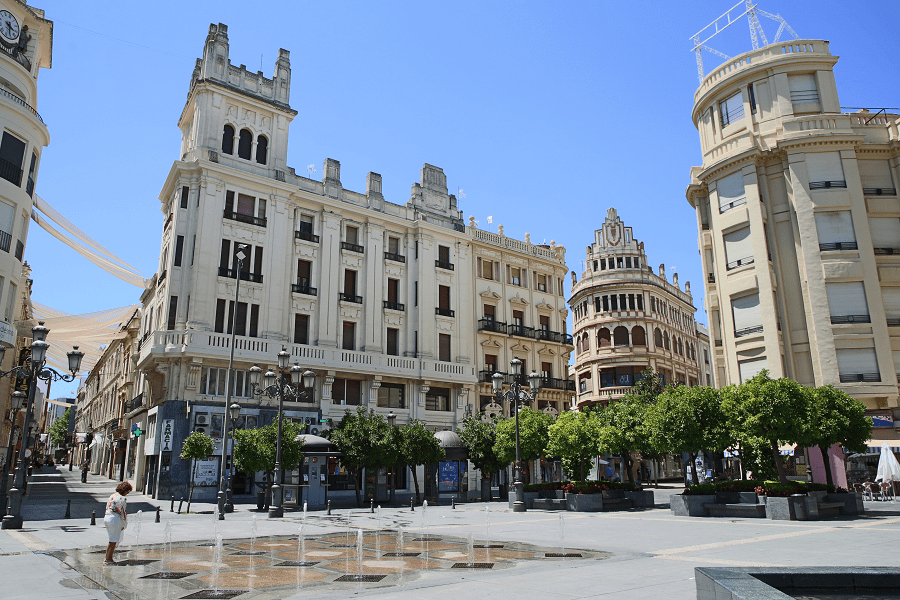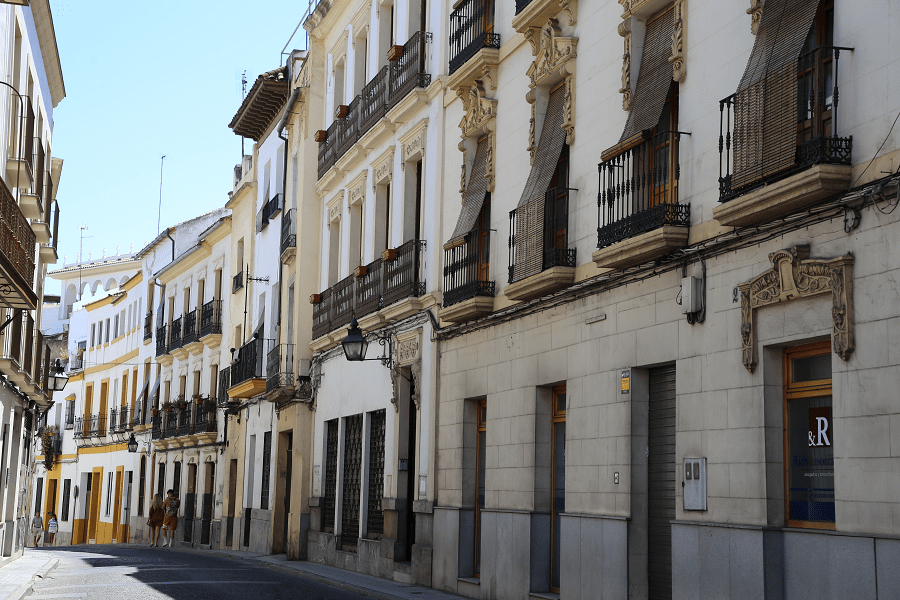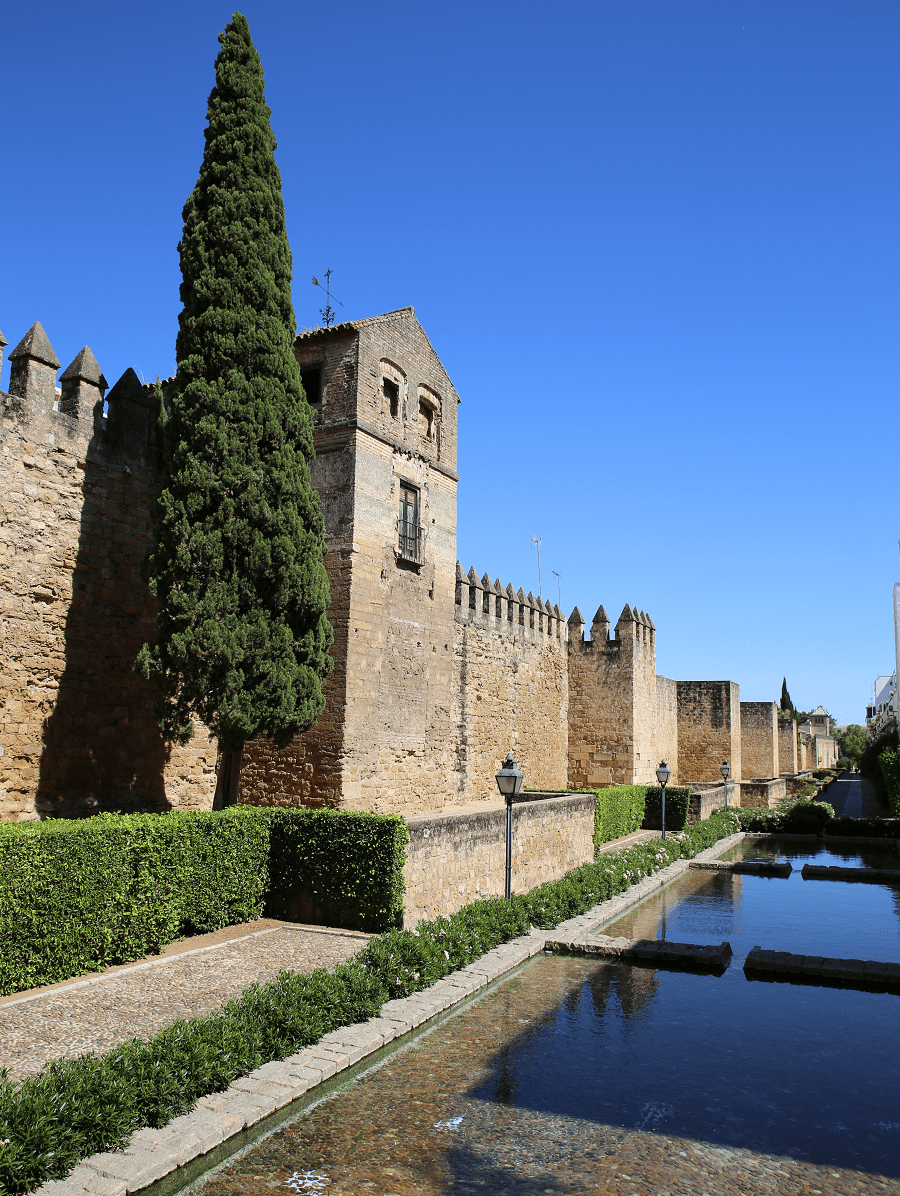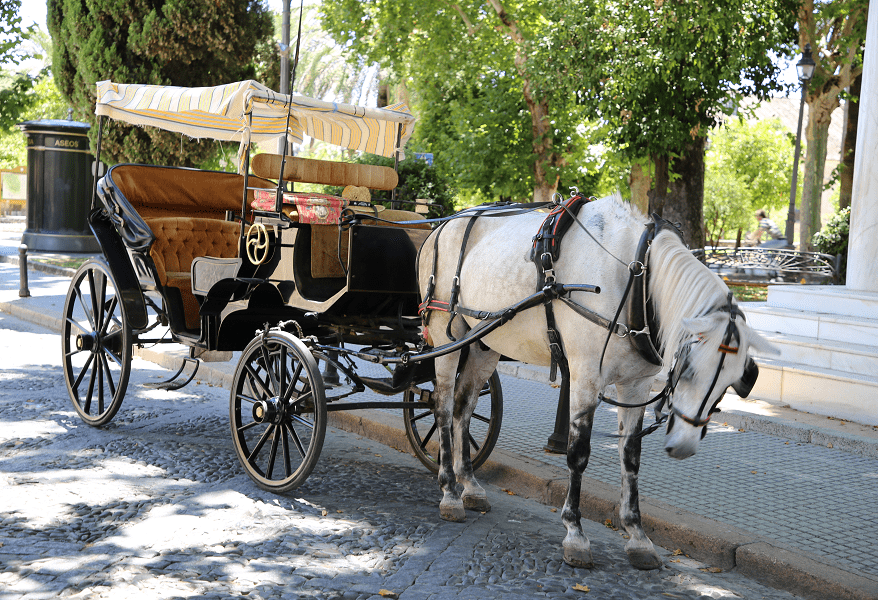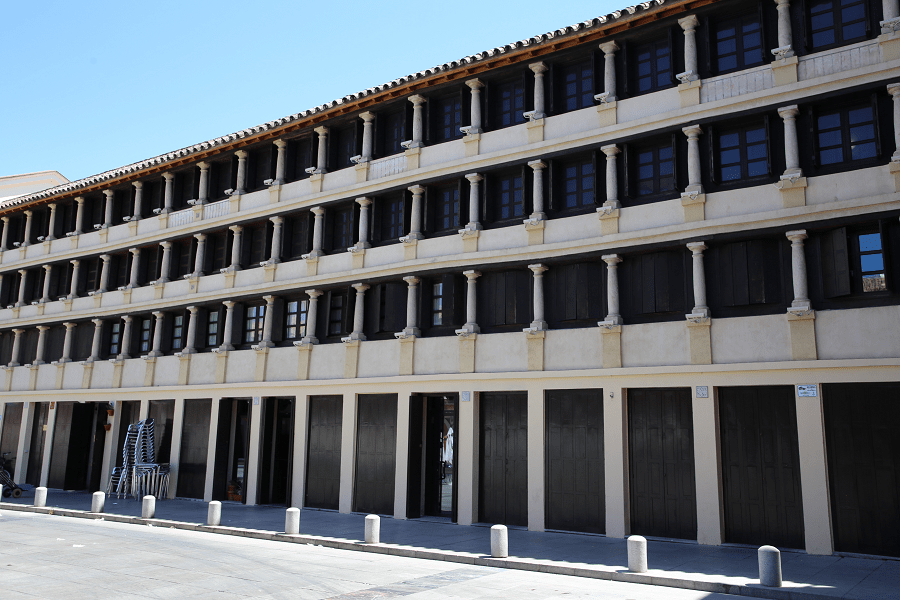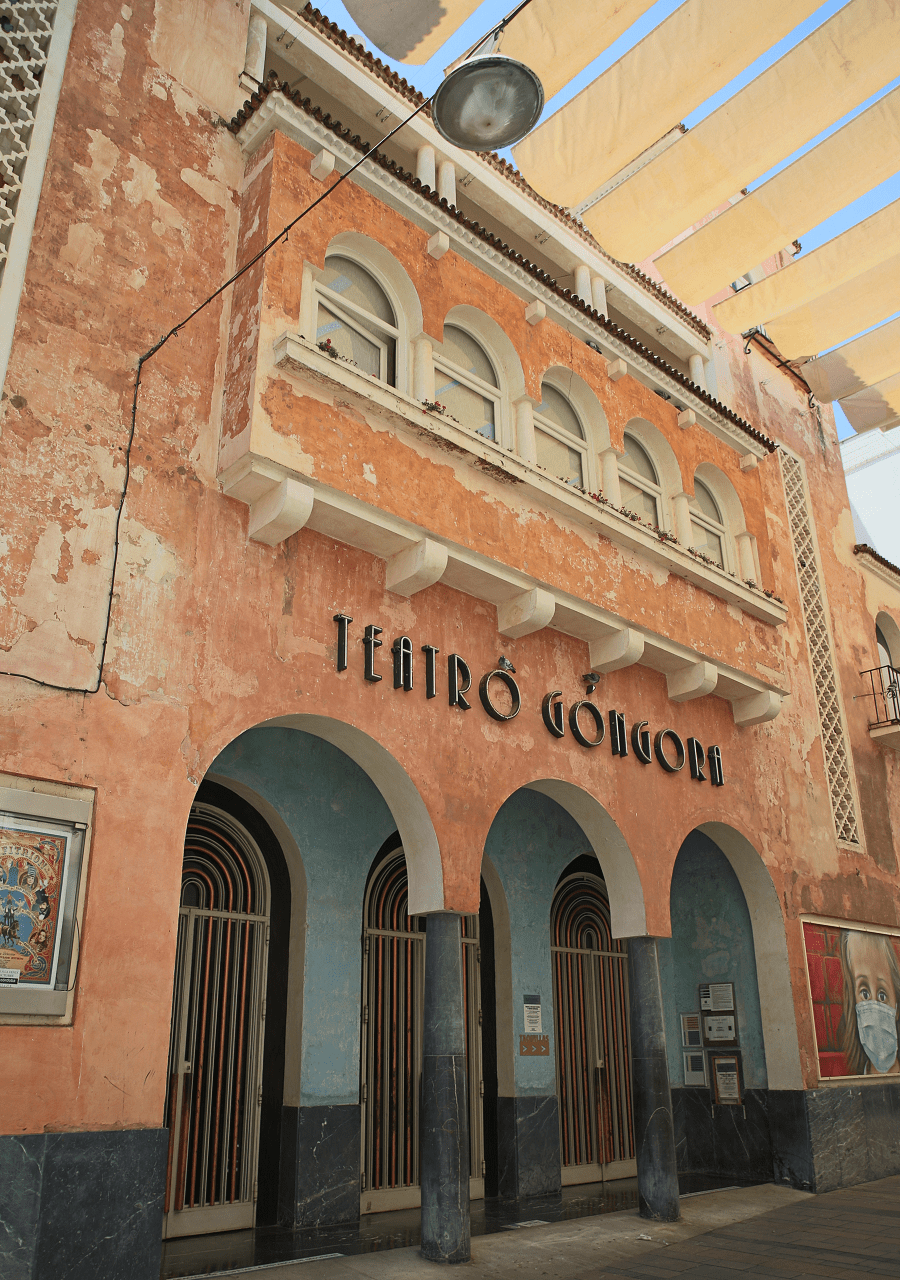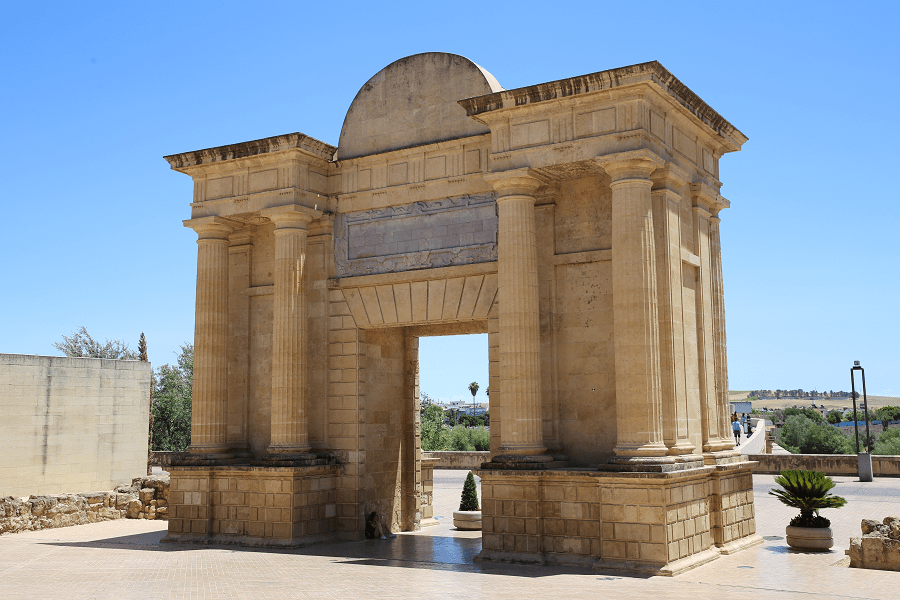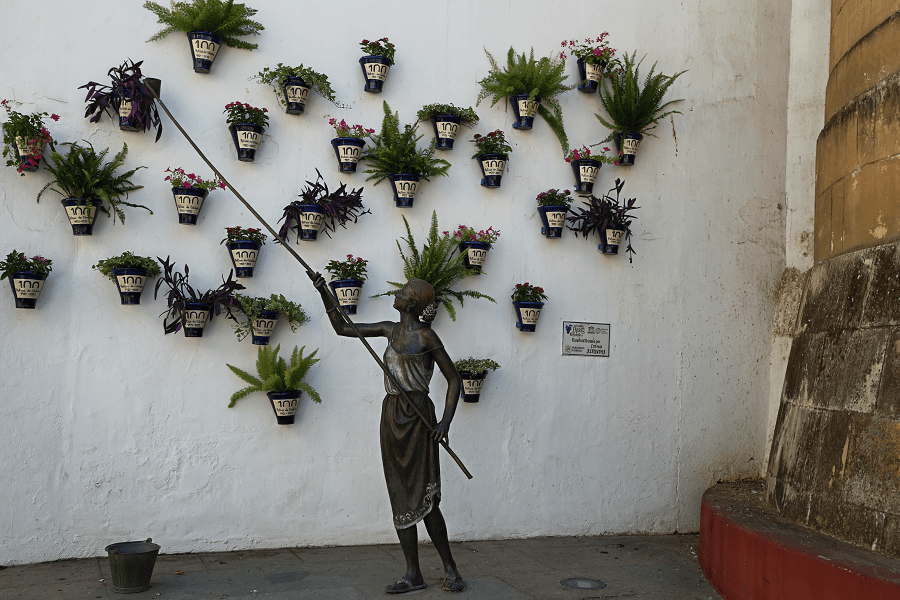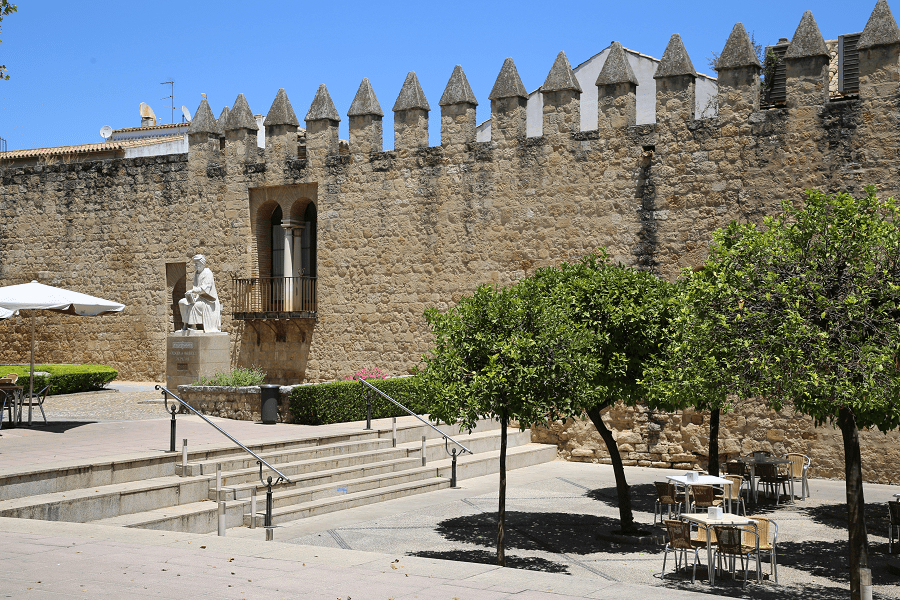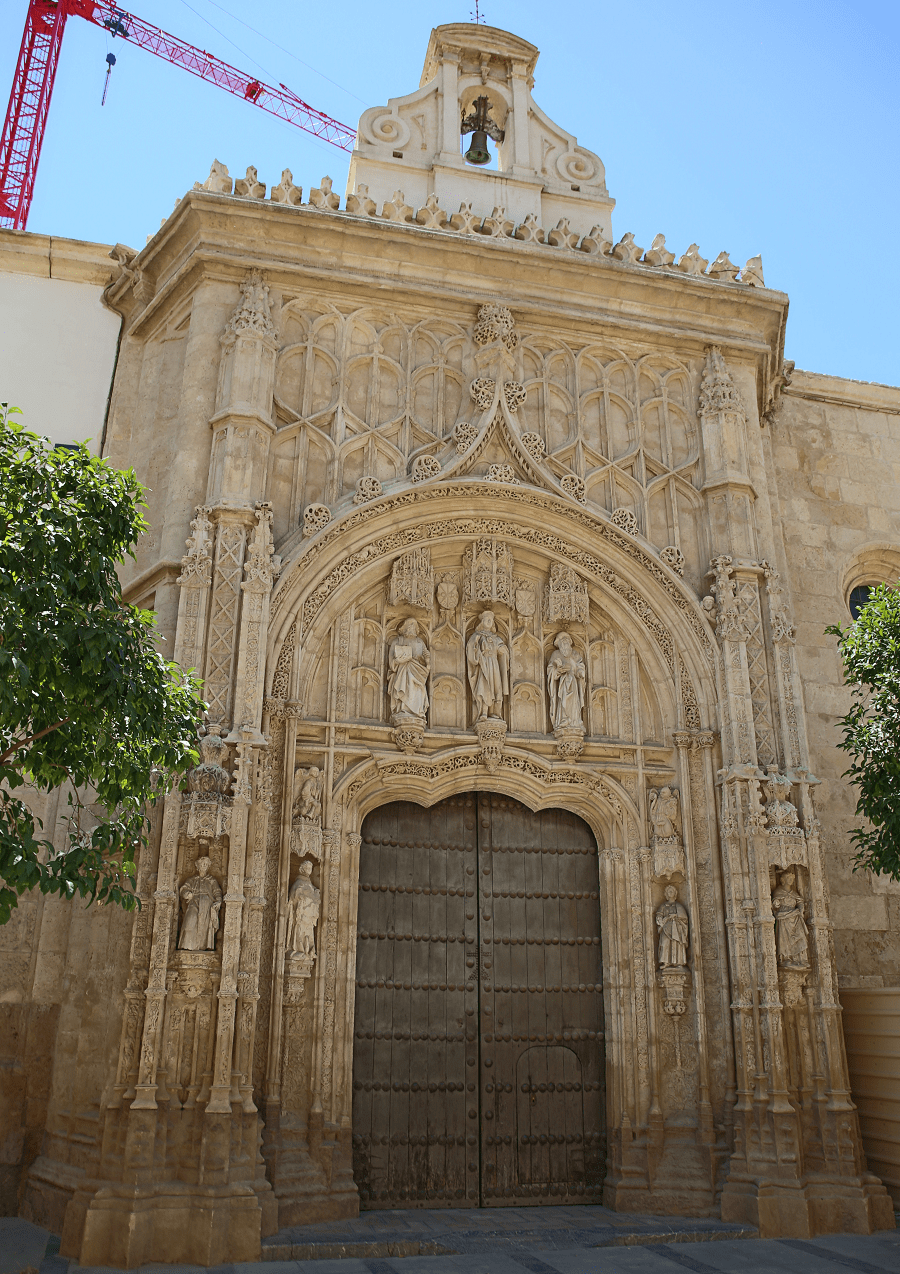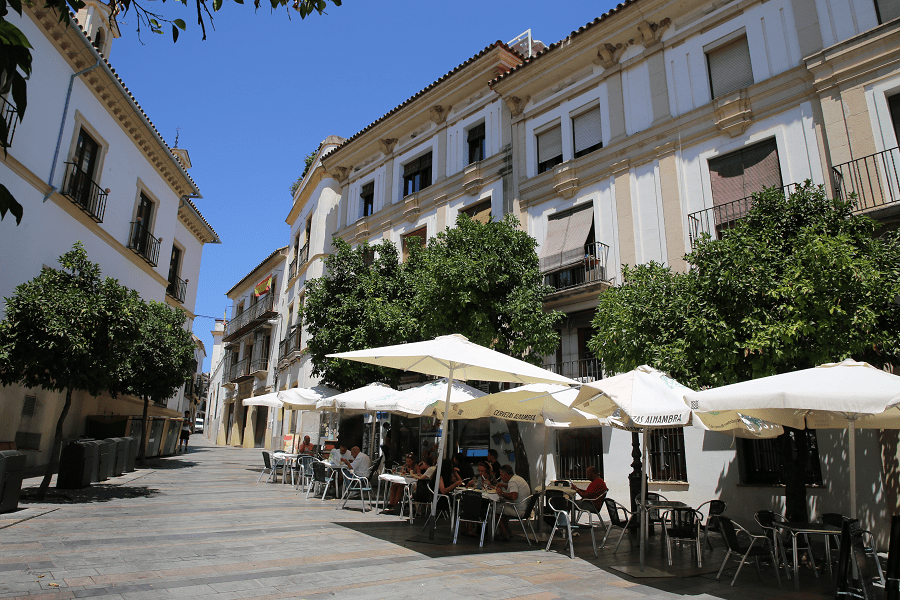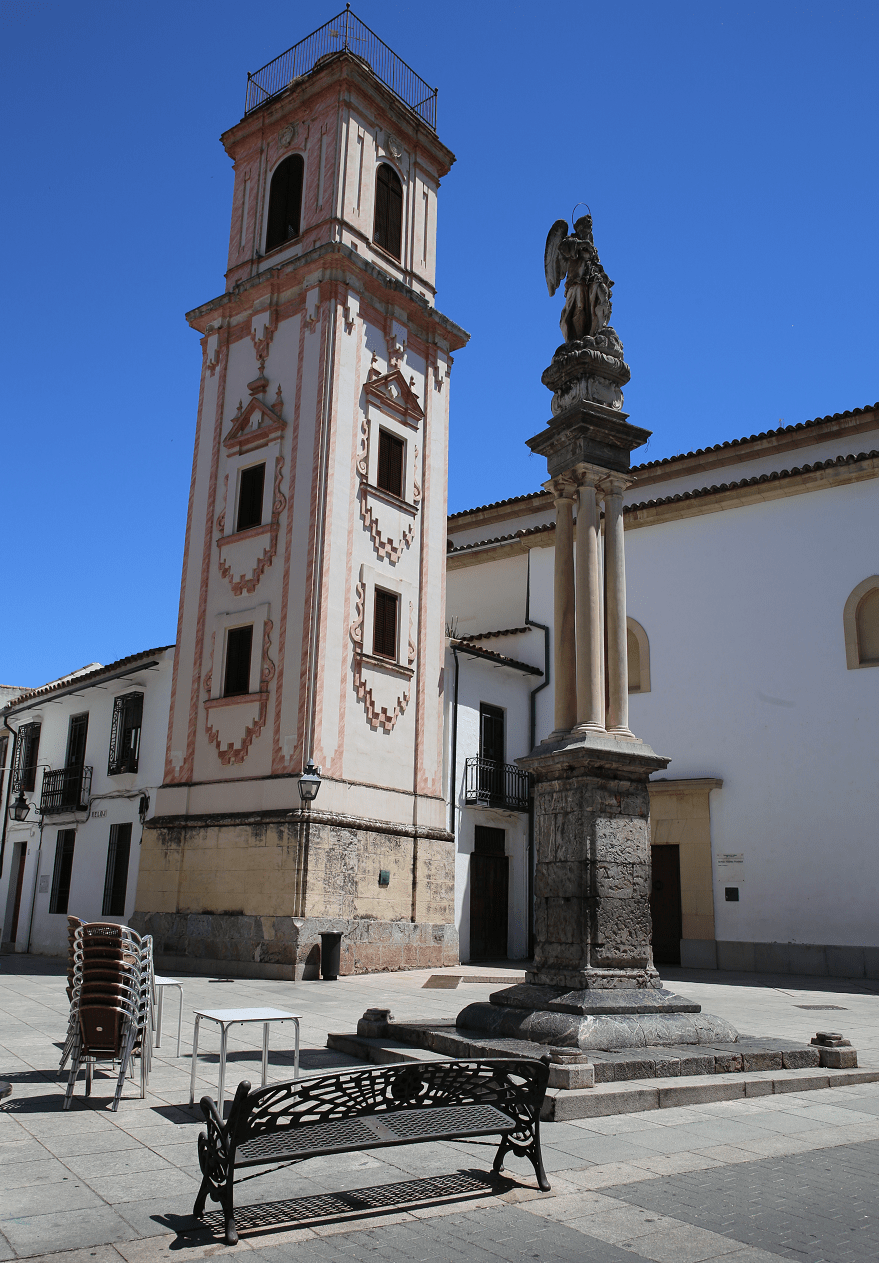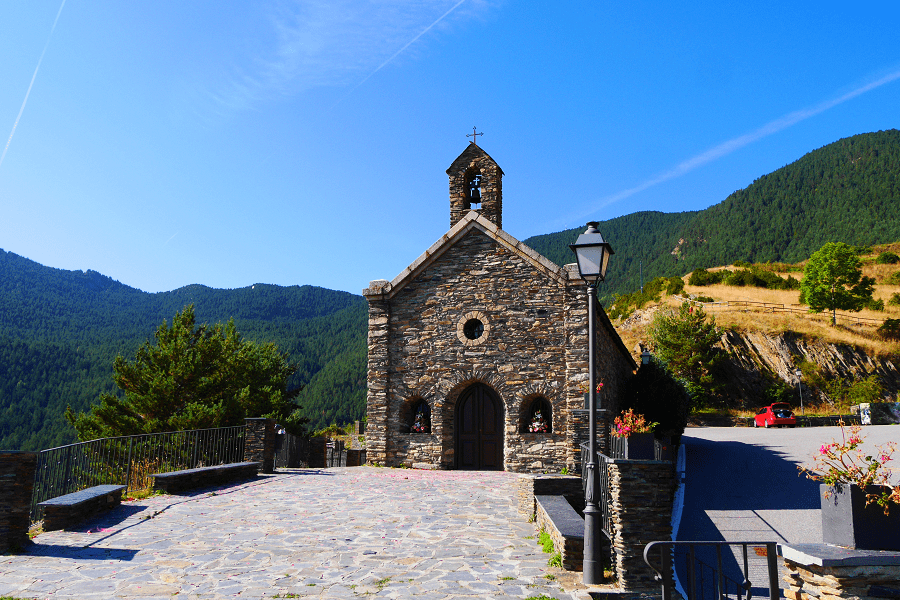Córdoba is a city and municipality in Andalusia, capital of the homonymous province, located in a depression on the banks of the Guadalquivir and at the foot of the Sierra Morena in Spain. It has a population of 326,039 inhabitants in 2020, being the third largest and most populated city in Andalusia after Seville and Malaga, and the twelfth in Spain.
Founded by the Romans during the 2nd century BC. However, its peak will occur during the Muslim domination of the Iberian Peninsula, when it will rise as the capital of the Emirate of Córdoba, while during the Caliphate of Córdoba it became the most inhabited, cultured and opulent city in Europe and a leading education center during the long European Middle Ages.
Córdoba is currently the city that houses the most Unesco World Heritage titles in the world. In 1984, the Mosque-Cathedral of Córdoba was included in the reputed list; in 1994 the historic center that surrounds it. The Fiesta de los Patios Cordobeses was designated Intangible Cultural Heritage of Humanity in December 2012, and in July 2018 the palatine city of Medina Azahara, on the outskirts of the urban nucleus, was also declared a World Heritage Site. It has one of the largest historical centers in Europe, with 246.73 hectares with monuments dating from Roman times.
Tourism and main attractions
The Roman bridge of Córdoba is a bridge in the Historic centre, originally built in the early 1st century BC across the Guadalquivir river, though it has been reconstructed at various times since. It is also known locally as the Old Bridge as for two thousand years, until the construction of the San Rafael Bridge in the mid-twentieth century, it was the city’s only bridge across the river.
Most of the present structure dates from the Arabs reconstruction in the 8th century.
It is included in the small preserved area known as Sotos de la Albolafia. Since 1931, the bridge, together with the Puerta del Puente and the Calahorra tower, has been declared a Bien de Interés Cultural in the monument category. It also part of the historic centre of Cordoba, declared a World Heritage Site in 1984.
In 2006 it was closed to traffic to carry out conservation work on the structure, as well as internal and external restoration work. The restoration of the bridge had a budget of 13.6 million euros and was completed on the 1st of January 2008.
The Mosque–Cathedral of Córdoba, officially known by its ecclesiastical name, the Cathedral of Our Lady of the Assumption, is the cathedral of the Roman Catholic Diocese of Córdoba dedicated to the Assumption of Mary. Due to its status as a former Islamic mosque, it is also known as the Great Mosque of Córdoba or the Mezquita.
According to traditional accounts a Visigothic church, the Catholic Christian Basilica of Saint Vincent of Saragossa, originally stood on the site of the current Mosque-Cathedral, although the historicity of this narrative has been questioned by scholars. The Great Mosque was constructed on the orders of Abd ar-Rahman I in 785 CE, when Córdoba was the capital of the Muslim-controlled region of Al-Andalus.
Starting in the 19th century, modern restorations have in turn led to the recovery and study of some of the building’s Islamic-era elements. Today, the building continues to serve as the city’s cathedral and Mass is celebrated therein daily.
The mosque structure is regarded as an important monument in the history of Islamic architecture and is considered by many scholars to have been highly influential on the subsequent “Moorish” architecture of the western Mediterranean regions of the Muslim world. It is also one of Spain’s major historic monuments and tourist attractions, as well as a UNESCO World Heritage Site since 1984.
Minaret of San Juan: Built in 930 AD, the mosque that this minaret adorned has been replaced by a church and the minaret re-purposed as a tower. Even so, it retains the characteristics of Islamic architecture in the region, including two ornamental arches.
Along the banks of the Guadalquivir are the Mills of the Guadalquivir, Moorish-era buildings that used the water flow to grind flour. They include the Albolafia, Alegría, Carbonell, Casillas, Enmedio, Lope García, Martos, Pápalo, San Antonio, San Lorenzo and San Rafael mills.
Madinat al-Zahra or Medina Azahara was a fortified palace-city on the western outskirts of Córdoba in present-day Spain. Its remains are a major archaeological site today. The city was built in the 10th century by Abd-ar-Rahman III (912–961), a member of the Umayyad dynasty and the first caliph of Al-Andalus. It served as the capital of the Caliphate of Córdoba and its center of government.
The ruins of the city were excavated starting in 1911. Only about 10 hectares of the 112 hectares of the city have been excavated and partially restored, but this area includes the main palaces. A dedicated archeological museum, located on the edge of the site, was opened in 2009. On July 1, 2018, the site was listed as a UNESCO World Heritage Site with the inscription name “Caliphate City of Medina Azahara”.
The Caliphal Baths are an Islamic bathhouse (or Arab baths) complex in Córdoba, Spain. They are situated in the historic centre which was declared a World Heritage Site by UNESCO in 1994. The complex was contiguous to the former Caliphal Palaces of the Umayyads (now the Alcázar de los Reyes Cristianos), whose inhabitants it served. Today the baths have been partially reconstructed and are open as a museum.
The baths were constructed in the 10th century under the reign of Caliph Al-Hakam II (961–976) to serve the inhabitants of his palace. Bathhouses (hammams) of this type were a common feature of Muslim cities across the Muslim world, serving both a social and religious purpose. They assisted Muslims in the performance of ablutions, especially the full-body ablutions or ghusl, which were required for certain situations. They also served the general purpose of hygiene as well as being a place for socialization. Their layout and function was modeled on the Roman bathhouses which preceded them and which had already been part of urban life in the region for generations. The caliphal baths in Cordoba consisted of the usual sequence of cold room, warm room, and hot room.
The Judería de Córdoba, ‘the Jewish Quarter of Córdoba’, is the area of the Spanish city of Córdoba in which the Jews lived between the 10th and 15th centuries. It is located in the Historic centre of Córdoba, northeast of the Mezquita Catedral (the Mosque-Cathedral), in the area of the following streets: Deanes, Manríquez, Tomás Conde, Judíos, Almanzor and Romero.
It is one of the most visited areas by tourists given that, besides the Mosque, you can see monuments such as the Sinagoga (Synagogue), the Zoco Municipal (Zoco Municipal Market) or the Museo Taurino (Bull-fighting Museum), among others. It is part of the historic centre of Córdoba which was named a World Heritage Site by UNESCO in 1994.
Córdoba went through a period when three peoples (Christian, Jewish and Muslim) and their respective religions lived together, albeit, the non-Muslim population living subjugated under Islamic Law with Jews having their own court system. Walking through the Jewish Quarter, along the Calle de los Judíos (Jewish Street), visitors can now find a magnificent bronze statue dedicated to Maimónides, the great Jewish philosopher and doctor from Córdoba.
During this period, the majority of the Jewish people lived under the rule of Islam. During the four years of Umayyad hegemony, cultural, artistic and commercial Muslim activities turned Al-Ándalus (Muslim Spain) into the most cultured country in Europe. Historians talk of Córdoba with admiration, the capital of the Umayyad Caliphate, which turned into a magnificent cultural centre with its lakes and parks, amazing palaces and mosques. The court attracted and exercised its patronage over poets and philosophers, men of literature and science.
The Roman Walls which once surrounded Córdoba, Spain, were built after the Romans captured the city in 206 BC, making it part of the Roman Republic. The walls now form part of the historic center of Córdoba, a UNESCO World Heritage site.
Built as fortifications soon after the Romans captured Córdoba, the walls stretched some 2,650 m, completely surrounding the city. They consisted of carefully cut stone with an outer wall of up to 3 m high and a 1.2 m inner wall flanking a gap 6 m wide filled with rubble. There were several semicircular towers along the walls. When the city received the status of Colonia Patricia under Augustus, the southern wall was demolished in order to extend the city limits to the river.
Fernandine churches: the city is home to 12 Christian churches that were built (many as transformations of mosques) by Ferdinand III of Castile after the reconquest of the city in the 13th century. They were to act both as churches and as the administrative centres in the neighborhoods into which the city was divided in medieval times.
Museums
The Archaeological and Ethnological Museum of Córdoba is a museum, owned by the Spanish State, its management has been transferred to the Ministry of Culture of the Junta of Andalusia.
The formal creation of the Provincial Archeological Museum was predated by an initiative proposed in 1866 and the ensuing decree for the creation of provincial museums issued on 20 March 1867. The museum was originally mixed with the Museum of Fine Arts, so a number of efforts to obtain an independent premises for the increasing collection of archeological items were taken. Following a number of relocations of the collection, the Spanish State bought the Rennaissance palace of Páez de Castillejo in 1942 as new premises for the museum. The works for the adaptation for exhibition purposes took place between 1945 and 1959.
The collection could be divided in three large subgroups: 1) Prehistory and Protohistory, 2) Rome and the Visigothic Culture and 3) Islam and Mudéjar art.
The Julio Romero de Torres Museum is located next to the Guadalquivir river and was opened in November 1931. The home of Julio Romero de Torres, has undergone many renovations and been turned into a museum and it has also been home to several other historical institutions such as the Archaeological Museum (1868-1917) and the Museum of Fine Arts. Many of the works include paintings and motifs done by Julio Romero de Torres himself.
The Fine Arts Museum of Córdoba is a State-owned art museum. Similarly to most art museums in Spain, its creation ensued after the 1835 desamortización. The museum was thus created in 1844, and, directed by Diego Monroy Aguilera, it was installed in the former premises of the provincial deputation. Given some issues stemming from the inadequacy of the facilities, the museum was moved to the Hospital de la Caridad in 1862, although issues lingered as the museum shared the building with other institutions.
A section of Modern Art was created in 1902.
The management of the museum was transferred to the Junta of Andalusia in 1984 (the Spanish State remained as owner).
Items hosted by the museum include works by Pedro Romana, Pedro de Campaña, Alejo Fernández, Pablo de Céspedes, Juan de Peñalosa, José de Ribera, Antonio del Castillo, Antonio García Reinoso, Valdés Leal, Juan de Alfaro, Juan de Mesa, Antonio Palomonio, José Ignacio Cobo y Guzmán, Verdiguier, Rafael Romero Barros, Rafael Romero de Torres, Julio Romero de Torres, Ricardo Baroja and Mateo Inurria. While largely focused on the Cordobese art since the 14th century onward, the museum also features works by Zuloaga, Gutiérrez Solana, Vázquez Díaz, Tàpies, Chillida, Canogar and Saura.
The Diocesan Museum is located in the Episcopal Palace, which was built upon a formerly Arabic castle. The collection within houses many paintings, sculptures and furniture.
Shopping
As in most of the country, small and medium businesses are the ones with the most representation. Thanks to the good size of the city, it has a great variety of companies and commercial chains that favor competition and the consumer. Despite this, the commercial density is lower than the average in Spain.
Large shopping areas:
El Arcángel Shopping Center. Located in the El Arcángel neighborhood, it was inaugurated in 1994 and has more than 34,000 m² spread over two floors, plus other underground parking spaces. It is popularly known as “Eroski”, since this company occupied 13 386 m² on the second floor of the center, which it also owned, until in November 2016 it decided to close it after selling its stake in the shopping center in July, as part of Eroski’s divestment plan. C&A, Toys “R” Us and Primark are some of the tenants with the largest footprint.
La Sierra Shopping Center. With a total floor area of 109,000 m² spread over five floors, it was built in 1994. In 2016, it underwent a profound makeover of more than 18 million euros. It houses a large number of businesses, the most outstanding are Carrefour, Zara and the other stores of the Inditex group, and H&M.
Ronda de los Tejares Shopping Center, of the El Corte Inglés chain. It is the most central shopping center in the city, which was inaugurated in 1995 in its current location on Avd. Ronda de los Tejares, replacing the old Preciados Galleries.
Zoco Shopping Center. Located on Avenida de Manolete. Led by the Deza company.
Zahira Shopping Center. Located on the Carretera de Madrid and the Ronda Este. Belonging to the Carrefour company.
Ronda de Córdoba Shopping Center, belonging to the El Corte Inglés group, which also houses a Hipercor center on the first floor. Opened in 2012 after an investment of 125 million euros, it is the newest center built in Córdoba. It has an area of 142,000 m², employing more than 3,000 employees, of which 800 are direct.
Cuisine and restaurants
Given the strategic location of the city of Córdoba, Cordoba’s gastronomy is mainly nourished by products from the countryside and its fertile plain, as well as from the Sierra, where its cattle ranch comes from, as well as its olive oil from the southern part. The combination of all these ingredients, all of them top quality, make Cordoba cuisine a cuisine of stews.
On the other hand, there are signs of Muslim influence in Cordoba gastronomy, such as the use of spices (oregano, mint, tarragon), or the use of foods introduced by the Arabs, such as rice, spinach, aubergine, or bitter orange.
As typical dishes of the Cordovan gastronomy we can highlight the salmorejo, the flamenquines, the oxtail, the lamb with honey, the chopped oranges or the artichokes to the “montillana” and as a more typical dessert we can highlight the Cordovan cake, it consists of a puff pastry filled with candied citron called “angel hair”.
There are 15 Michelin list restaurants in the city:
- Noor, Pablo Ruiz Picasso 6, 95 – 190 EUR • Creative (Two stars)
- Choco, Compositor Serrano Lucena 5, 95 – 125 EUR • Creative, Andalusian (One star)
- La Casa de Manolete Bistró, Avenida de Cervantes 10, 40 – 89 EUR • Contemporary, Andalusian
- Arbequina, Ramírez de las Casas Deza 10-12, 29 – 75 EUR • Modern Cuisine, International
- La Cuchara de San Lorenzo, Arroyo de San Lorenzo 2, 35 – 80 EUR • Traditional Cuisine
- Taberna el nº 10, Romero 10, 25 – 35 EUR • Traditional Cuisine
- La Taberna de Almodóvar, Benito Pérez Galdós 1, 30 – 60 EUR • Traditional Cuisine
- El Envero, Teruel 21, 30 – 45 EUR • Modern Cuisine
- Celia Jiménez, Escritora María Goyri, 65 – 75 EUR • Modern Cuisine
- Tellus, María La Judía, 35 – 50 EUR • Traditional Cuisine
- Taberna Salinas, Tundidores 3, Regional Cuisine
- Casa Pepe de la Judería, Romero 1, 32 – 86 EUR • Regional Cuisine
- El Bar de Paco Morales, Ronda de los Tejares 16, 19 – 40 EUR • Modern Cuisine
- Los Berengueles, Conde de Torres Cabrera 7, 30 – 50 EUR • Traditional Cuisine
- Casa Rubio, Puerta Almodóvar 5, 30 – 60 EUR • Regional Cuisine
Transport and how to get to?
Córdoba railway station is connected by high speed trains to the following Spanish cities: Madrid, Barcelona, Seville, Malaga and Zaragoza. More than 20 trains per day connect the downtown area, in 54 minutes, with Málaga María Zambrano station, which provides interchange capability to destinations along the Costa del Sol, including Málaga Airport.
Córdoba has an airport, although there are no airlines operating commercial flights on it. The closest airports to the city are Seville Airport (110 km as the crow flies), Granada Airport (118 km) and Málaga Airport (136 km).
Distances to main cities of Andalusia and Madrid:
From Huelva 2 hr 40 min (237 km) via A-49 and A-4
From Granada 2 hr 15 min (201 km) via A-92 and A-45
From Seville 1 hr 42 min (141 km) via A-4
From Malaga 1 hr 50 min (158 km) via A-45
From Cadiz 2 hr 38 min (259 km) via AP-4 and A-4
From Almeria 3 hr 30 min (362 km) via A-92 and A-45
From Jaen 1 hr 27 min (119 km) via A-311 and A-4
From Madrid 4 hr 2 min (398 km) via A-4
Main information
Area: 1253 km² (municipality)
Coordinates: 37°53′4.226″N 4°46′46.443″W
Population: 326 039 (municipality)
Languages: Spanish
Currency: Euro
Visa: Schengen
Time: Central European UTC +1




